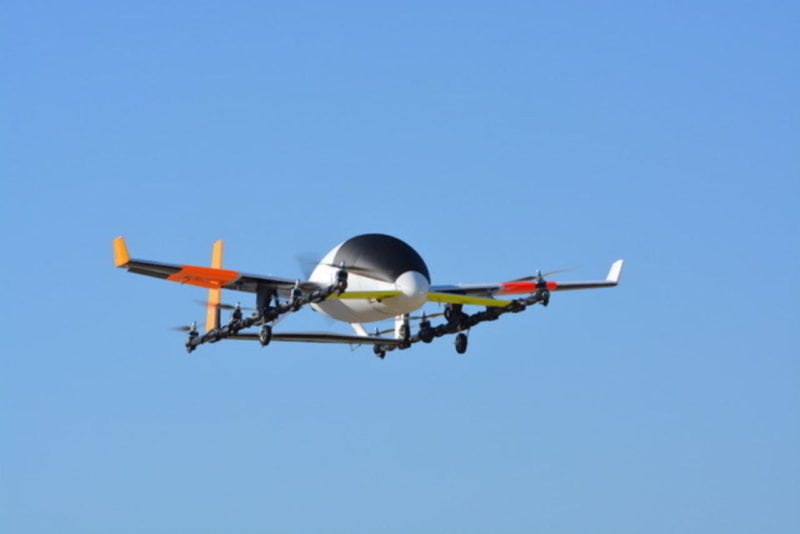
First flight of Aurora’s eVTOL aircraft occurred April 20, 2017. Photo courtesy of Aurora Flight Sciences
Embraer CEO Paulo Cesar de Souza e Silva believes there could be a big potential market for sales of electric aircraft in the future, the Brazilian airframe manufacturing executive told analysts during the company’s first quarter earnings call. Embraer was one of several aviation companies that has formed a partnership with Uber in an effort to develop electric vertical takeoff and landing (eVTOL) aircraft.
Uber first announced its partnership with Embraer during the recent Uber Elevate Summit in Dallas, Texas, where the ride-sharing smartphone app company said it plans to pursue the development of an eVTOL aircraft. Other partners include Aurora Flight Sciences, Bell Helicopter, Pipistrel and Mooney.
Embraer’s partnership with Uber is an initiative that is part of its new business unit, Embraer business innovation, which is tasked with exploring future opportunities in air transportation. While very little details have surfaced about Uber’s future in air transportation, the company appears to want to develop small electric vertical take-off and landing vehicles.
When asked what he sees as a future potential market for electric aircraft, the Embraer chief said he thinks the market is “very big,” but there are a lot of challenges that need to be overcome.
“We need the certification, we need the authorities to approve flying in big cities. We need to find a good solution for the battery and recharge of battery. So we have to solve the logistics right for instance in big cities in order to have these vehicles taking off and landing,” said Silva, in a transcript of the earnings call published by Seeking Alpha.
The concept of the electric aircraft and the use of electric propulsion dates back as far as 1981, when Paul MacCready’s Solar Challenger aircraft powered by solar panels and an electric motor flew a distance of 163 miles between France and England, according to NASA.
However, in recent years, more companies have been performing demonstration flights and showing greater interest in the technology. For example, in July 2015, the Airbus’ proof of concept for an electric aircraft flew 37 minutes across the English Channel using electric propulsion. Boeing and JetBlue also have partnered to invest in the Zunum Aero-led development of an electric-powered aircraft. Zunum is a startup based in Washington state that wants to revolutionize regional air travel.
A major technological challenge to the establishment of the widespread use of electric-powered aircraft for transporting passengers exists within the basic design of how an electric aircraft works; using batteries to power an electric motor that causes a propeller to spin. Not only does this involve far less thrust than a conventional air transport aircraft, but all of the companies that have developed or are developing electric-powered aircraft also have to deal with the limits within the amount of energy that the batteries can store to power the aircraft. Lithium-ion batteries can overcome this, but the challenges associated with their use in aircraft are well documented in several incidents that led to the grounding of the Boeing 787 in 2013.
When the partnership between Embraer and Uber was first announced, Mark Moore, Uber’s director of engineering for aviation, noted that Uber wants Embraer to help conceptualize the use of affordable fly-by-wire technology into smaller electric-powered aircraft.
On the first quarter earnings call, Silva noted Uber’s existing market penetration in ride-sharing with operations in 75 countries, 450 cities and 60 million people taking Uber trips on a monthly basis, as a future market for the use of eVTOL aircraft for regional and intercity transportation.
“It is our interest in developing or understanding much deeper the electric aircraft or hybrid aircraft. So this is a good fit for us at this stage,” said Silva.